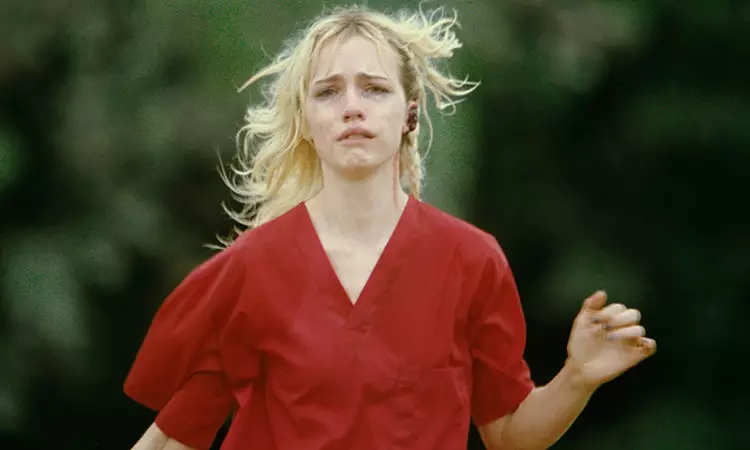“Strange Darling,” directed by JT Mollner, presents viewers with a disorienting tableau of terror and intensity, layered with unexpected emotions that challenge conventional genre frameworks. The film’s opening scene quickly immerses its audience in a tense cat-and-mouse chase, introducing two enigmatic characters: The Lady and The Demon. This dynamic not only captures our attention but also raises a multitude of questions about the nature of the relationship between predator and prey, and what lurks beneath the surface of their impending confrontation.
The film’s approach to storytelling is anything but straightforward. Choosing to commence with Chapter Three immediately distances itself from traditional narrative structures, thrusting viewers into the midst of a horrific scenario. This technique elicits a heightened sense of confusion and urgency, compelling the audience to piece together the preceding context as they navigate the film’s harrowing landscape. By playing with time, Mollner effectively manipulates our perceptions and challenges our expectations — it’s not merely a thriller but an exploration of human dynamics in extreme distress.
The brief glimpse into The Lady’s desperate flight through wooded terrain evokes a primal fear deeply rooted in horror cinema. It is a familiar scene, one that cultivates a visceral response from audiences, yet Mollner manages to infuse it with a sense of unpredictability. Why is The Lady being pursued? What secrets linger in her past? As these questions race through our minds, the essence of horror transforms into an exploration of survival, gender, and consent.
A Shimmer of Hope Amidst Violence
The jarring contrast between the apparent serenity of the woods and the chaos of The Demon’s pursuit serves to heighten the film’s thematic complexities. The narrative leads The Lady to a seemingly innocuous farmhouse, where she encounters an older couple who are equally bewildered and concerned. The presence of this couple and their odd conversation about Bigfoot injects a sense of absurdity into the horrific, reminding us that even in the darkest contexts, light-heartedness can emerge unexpectedly.
This intersection of horror and humor creates a space for the exploration of human interconnectedness, even in bizarre situations. Here, the couple’s potential for assistance confronts the viewer with a moral ambiguity — will they aid The Lady, or are they embroiled in something more sinister? Such moments reinforce the film’s thematic exploration of the thin line separating safety from danger in an unpredictable world.
“Strange Darling” transcends the boundaries of a straightforward slasher by delving into deeper themes surrounding violence, desire, and gender norms. Mollner deftly erases the typical binary between victim and aggressor. The Lady’s vulnerability navigates through a spectrum of power dynamics, forcing audiences to confront uncomfortable truths about agency and consent. In a landscape where ‘no’ can sometimes mean ‘yes,’ the film challenges societal standards regarding sexual assault, creating a dialogue about the complexities of human relationships in extremity.
The culmination of these themes poses complex questions on our moral compass. Are The Lady and The Demon merely products of their circumstances, or do they reflect broader societal issues that continue to plague human interactions? In a film that promises thrills galore, the exploration of these deeper questions yields a gripping psychological tension that is as thought-provoking as it is unsettling.
“Strange Darling” emerges not only as a thriller but as an innovative discourse on the chicken-and-egg relationship between love and violence. As the narrative unfolds, it demands that viewers confront their preconceived notions while also grappling with the complicated tapestry of morality that exists within personal survival. In doing so, Mollner cements his film as a multifaceted piece of art that oscillates between horror and a twisted romance. In a world where the boundaries between good and evil are increasingly blurred, “Strange Darling” serves as a stark reminder that understanding the human condition is often fraught with peril.


Leave a Reply